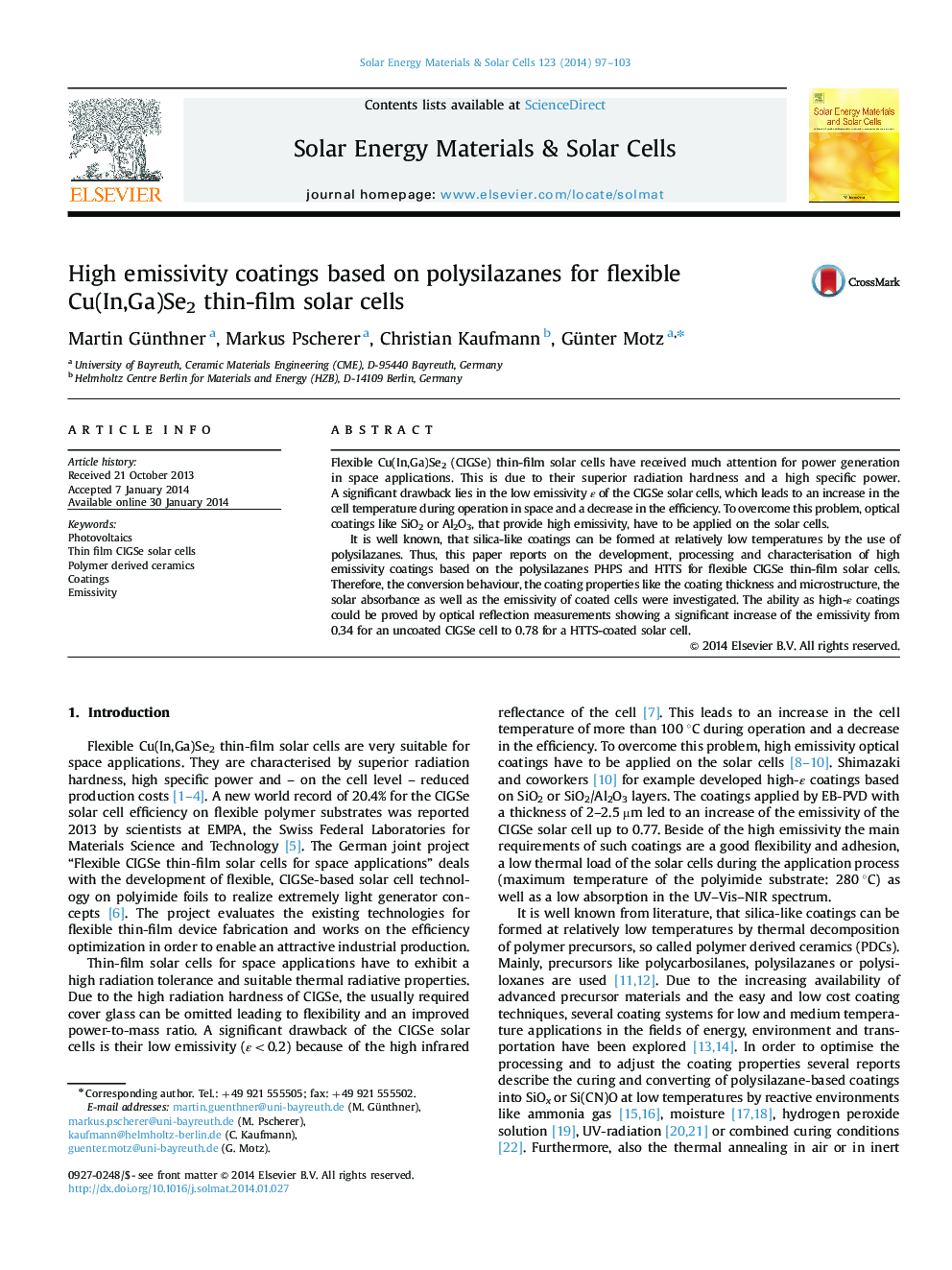| Article ID | Journal | Published Year | Pages | File Type |
|---|---|---|---|---|
| 78051 | Solar Energy Materials and Solar Cells | 2014 | 7 Pages |
•We develop a novel high emissivity coating system for CIGSe thin-film solar cells.•The conversion behaviour, coating properties and the emissivity were studied.•Thin silica-like coatings are achieved at low curing temperatures of 200 °C.•The emissivity of CIGSe solar cells can be clearly increased from 0.34 to 0.78.•The polysilazane-based coatings are applied by a simple dip-coating method.
Flexible Cu(In,Ga)Se2 (CIGSe) thin-film solar cells have received much attention for power generation in space applications. This is due to their superior radiation hardness and a high specific power. A significant drawback lies in the low emissivity ε of the CIGSe solar cells, which leads to an increase in the cell temperature during operation in space and a decrease in the efficiency. To overcome this problem, optical coatings like SiO2 or Al2O3, that provide high emissivity, have to be applied on the solar cells.It is well known, that silica-like coatings can be formed at relatively low temperatures by the use of polysilazanes. Thus, this paper reports on the development, processing and characterisation of high emissivity coatings based on the polysilazanes PHPS and HTTS for flexible CIGSe thin-film solar cells. Therefore, the conversion behaviour, the coating properties like the coating thickness and microstructure, the solar absorbance as well as the emissivity of coated cells were investigated. The ability as high-ε coatings could be proved by optical reflection measurements showing a significant increase of the emissivity from 0.34 for an uncoated CIGSe cell to 0.78 for a HTTS-coated solar cell.
